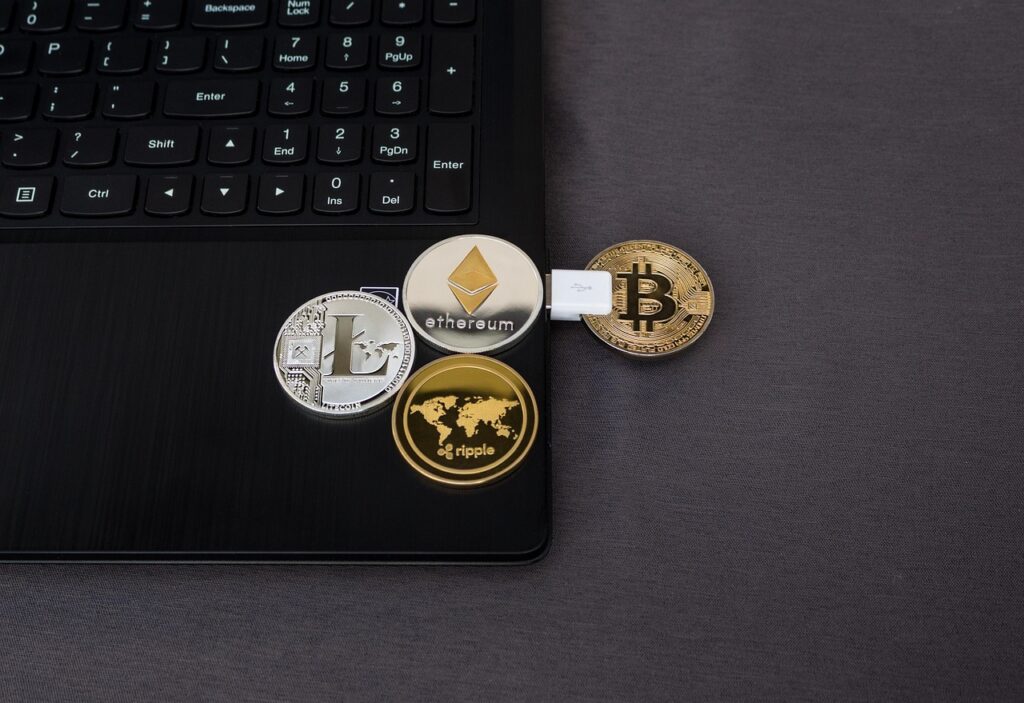Table of Contents
- 1 Protecting Yourself from Crypto Scams and Security Breaches
- 2 Crypto Fraud Alerts: Scams Every Investor Should Know
- 3 Major Cryptocurrency Hacks That Rocked the Industry
- 4 1. Mt. Gox (2014)- Theft of $460 million
- 5 2. Ronin Network (2022): $625 million in Steals
- 6 3. FTX Collapse (2022): A Marriage between Fraud and Mismanagement
- 7 4. Wormhole Bridge Hack (2022) — $320 million lost
- 8 5. Recent Hack: Ledger Connect Kit Incident (2024)
- 9 Top 10 Ways to Protect Yourself from Crypto Threats
- 10 In Conclusion
Protecting Yourself from Crypto Scams and Security Breaches
Cryptocurrency has created an opportunity for a wide array of options, from decentralized finance and borderless payments to anonymous transactions. Yet, as the cryptocurrency industry has evolved, with all the innovations, it is also becoming an attractive target for scammers, hackers, and other criminals aiming to take advantage of unsuspecting users through crypto hacks and scams.
If you are fully immersed in the world of cryptocurrency or are merely considering it, spotting the warning signs can save you from throwing away your hard-earned money.
In this article, we will discuss the most popular crypto scams, address some of the primary crypto hacks, and, above all, educate you about protecting yourself in the unpredictable digital assets.
Crypto Fraud Alerts: Scams Every Investor Should Know
Here are some common scams that you encounter every day:
- Crypto ATM Scams: Crypto-ATMs are a quick way of buying crypto, but somehow, they have also turned out to be an unfortunate ground for scammers. Here’s how they occur:
- Scenario: A scammer calls or texts you, impersonating the IRS, a solicitor, police, a utility company, or even tech support.
- Threat: They say, somehow, that you owe money or that your account has been compromised.
- The Execution: They tell you to go to a crypto ATM nearby, buy some Bitcoins, or any other type of cryptocurrency, and send them to a QR code they furnish.
Red Flag: No genuine entity would ever ask for payment using crypto, and certainly not through a crypto ATM. If someone pressures you to use a crypto ATM, it is 100% a scam.
- Crypto Airdrop Scams: Airdrops are promotional campaigns that disperse tokens for free into users’ wallets to promote a new crypto project. Whereas real crypto airdrops do exist, fake ones scam your crypto or your info.
- Bait: “You have been selected to receive 500 XYZ tokens! Just connect your wallet to claim.”
- Snares: Connecting your wallet to the wrong site could be a way of letting these scammers into your funds. Some airdrops might even ask you to pay for a “small gas fee” upfront; do not fall for it.
Red Flag: Never connect your wallet to any unfamiliar sites. If you didn’t sign up for the airdrop, ignore it.
- Crypto Giveaway Scams: This one is an oldie, but it still surprisingly works very well.
- The Bait: On Twitter, YouTube, or Telegram, an impersonator of a famous person or crypto exchange will say something like “Send us 0.1 BTC and get back 0.2 BTC!”
- The Outcome: You send your crypto and never hear from them again.
Scammers use fake or stolen social media accounts and sometimes use photoshopped screenshots to appear legit.
Red flag: Nobody is giving out free crypto in exchange for your crypto.
Major Cryptocurrency Hacks That Rocked the Industry
Unless scams involve individuals, crypto hacks usually affect exchanges, protocols, and whole ecosystems, at times costing millions (or billions) of dollars.
Some of the major hacks in the crypto world are:
1. Mt. Gox (2014)- Theft of $460 million
The first major exchange hack created the atmosphere for what terrible things could happen. Hackers took away 850,000 BTC (valued at nearly $460 million then) from Mt. Gox. The exchange filed for bankruptcy later, and a long period of legal disputes began.
2. Ronin Network (2022): $625 million in Steals
Hackers purloined over $625 million worth of crypto that was used within the game Axie Infinity. This is one of the largest DeFi hacks in existence, ever.
3. FTX Collapse (2022): A Marriage between Fraud and Mismanagement
This is technically an internal scandal rather than a hack. However, the demise of FTX proved that centralized exchanges could fall because of egregious internal practices. Over $8 billion worth of customer funds went missing. This led to criminal proceedings against the founder, Sam Bankman-Fried.
4. Wormhole Bridge Hack (2022) — $320 million lost
The Wormhole protocol that connects one blockchain to another was hacked due to a vulnerability in smart contracts. This hack reminded everyone of the risk in cross-chain bridges from a security perspective.
5. Recent Hack: Ledger Connect Kit Incident (2024)
A very recent attack exploited a vulnerability in Ledger Connect Kit, a wallet integration library. The attackers injected malicious code that drained wallets when users interacted with compromised dApps. Losses were in the millions.
Lesson from All These Crypto Hacks: Even if you do everything right, trusting the wrong protocol, bridge, or centralized exchange can still cost you. Always do your research and self-custody your funds when possible.
Top 10 Ways to Protect Yourself from Crypto Threats
Now that you are aware of the common traps and well-publicized collapsing, here are some ways to ensure that you don’t become a victim:
- Use a Hardware Wallet: Put your crypto in a hardware wallet (like Ledger or Trezor), especially if you are holding large quantities. Hardware wallets keep your private keys offline.
- Check URLs: Make sure you check the website address. Bookmark your important sites. Scammers create fake replica sites and make spoof websites for real crypto sites that look very similar to official sites.
- Avoid clicking on Random Airdrops or Giveaways: If it sounds too good to be true, then it probably is. Legitimate airdrops don’t ask you to connect wallets on suspicious sites or pay upfront gas fees.
- Turn on 2FA: Ensure you turn on 2FA for all your crypto accounts. Also, use an authenticator app versus SMS, if possible, for more security.
- Be Wary of Cold Calls or Texts: Whether there is a tax issue or a “security breach”, anyone calling you asking you to pay in crypto is a scam. Hang up.
- Keep Your Recovery Phrase Offline: Don’t ever take a picture or store a seed phrase digitally. Just write it down and put it somewhere secure.
- Verify Social Media Accounts: The accounts can be hacked even when verified. Someone messaging you for your “free crypto” is a scam. Always check the announcements through more than one channel.
- Use Well-Respected Exchanges: Use well-known, legit exchanges for your trades. And even with those, never keep your entire balance in them.
- Track Security News: Follow sources recognized for their credibility, such as CoinDesk, The Block, or CertiK, so that you have updated information on new scams and vulnerabilities.
- Burner Wallets for New Projects: For example, when you are testing a new DeFi app or minting NFTs, consider using a burner wallet with very little funds, so if things do go wrong, your exposure will be limited.
In Conclusion
There are immense opportunities in the crypto world, while there are also great traps. Whether it’s an innocent-looking airdrop, a generous giveaway, or a fast-talking scammer over the phone, remember crypto is irreversible. Once lost, it’s gone.
You do not have to understand blockchains to remain safe. All that needs to be done is exercise caution, curiosity, and a little bit of scepticism. Go with your gut and never let FOMO (Fear of Missing Out) ruin your decision.
Stay alert, stay safe, and keep your crypto secure.
Have you seen a scam lately? Have you been targeted by one? Let us know your story. Your experience could save someone else.



















